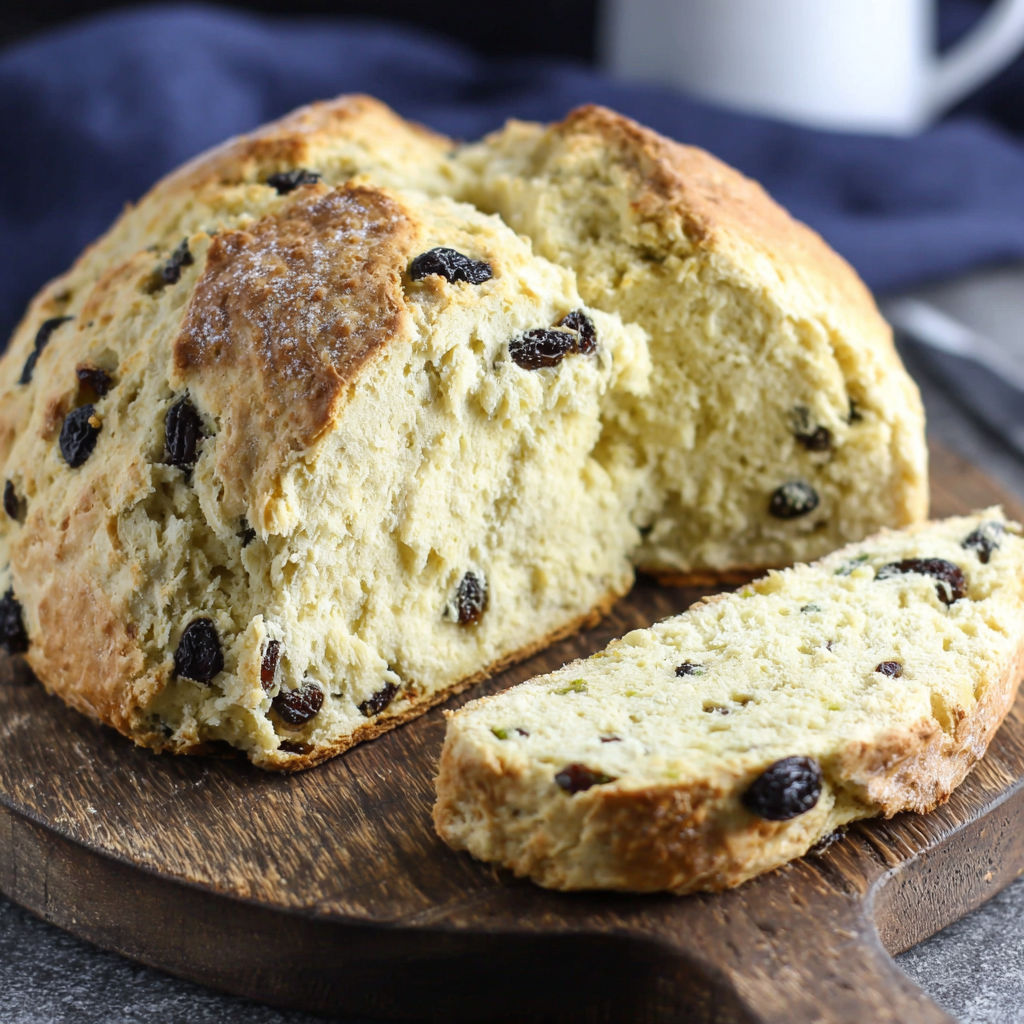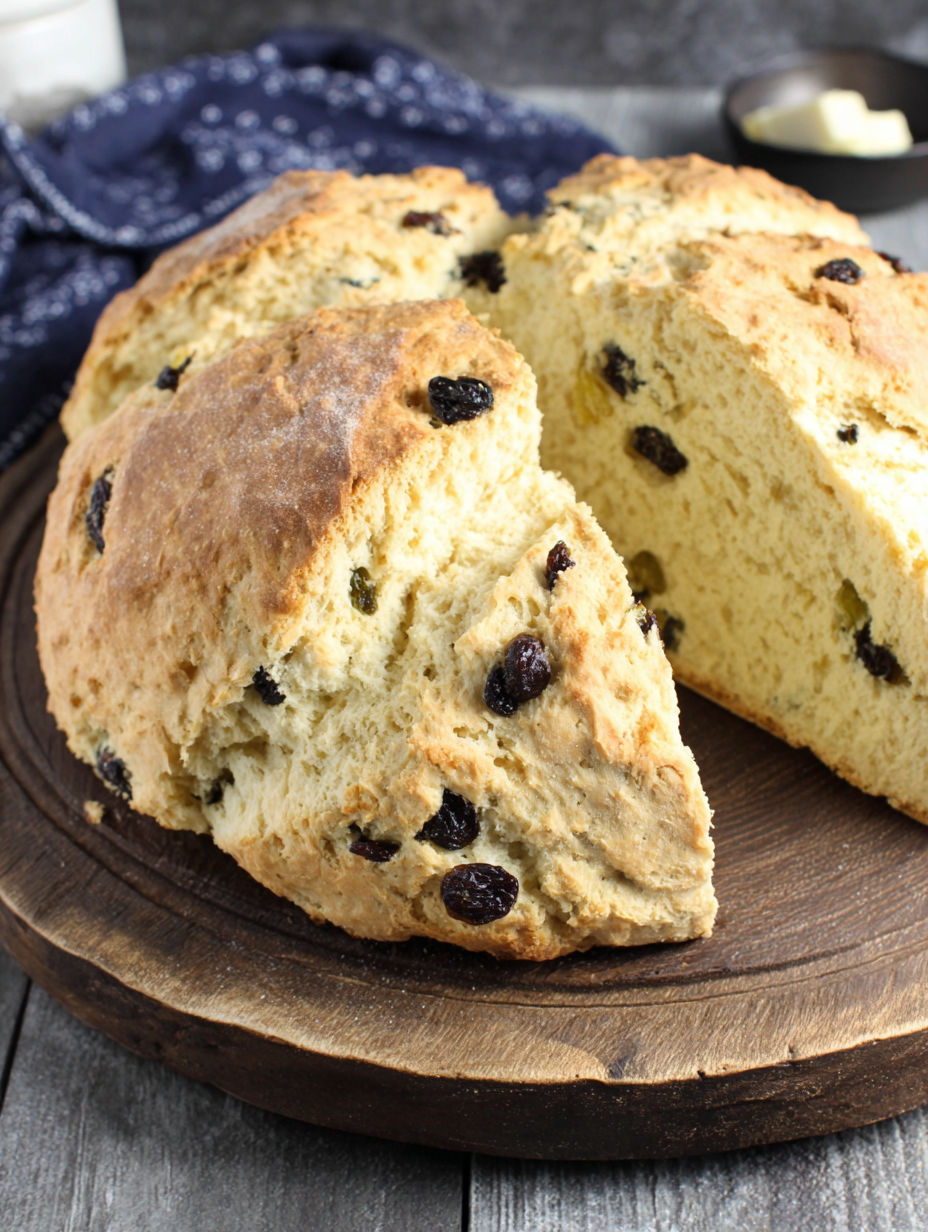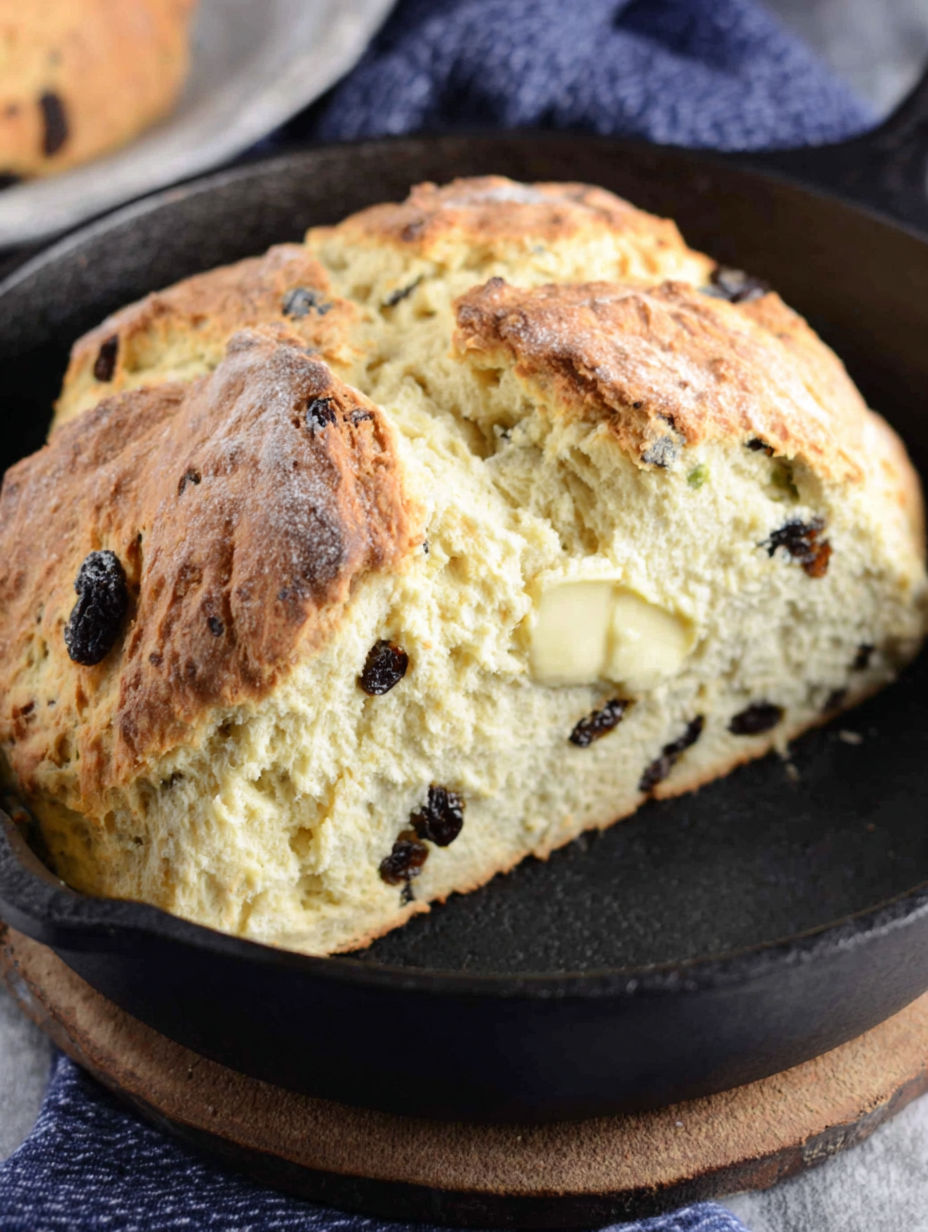 Pin to Save
Pin to Save
This Irish Soda Bread offers a wonderfully simple way to bring a taste of tradition into your kitchen without fuss. With a tender crumb and a subtly sweet finish, this bread feels like a warm hug on the table and bakes up quickly enough for a weekday treat or a weekend indulgence.
I first made this when craving the comforting flavors of Ireland and was amazed at how easy it was. Now it’s a favorite when I want something homemade but don’t have hours to spend in the kitchen.
Ingredients
- Four cups allpurpose flour: the base for a tender yet sturdy loaf, spooned and leveled for accuracy
- Quarter cup granulated sugar: adds a gentle sweetness that balances the salt
- One teaspoon baking soda: the leavening agent that gives the bread its rise and lightness
- One and a half teaspoons kosher salt: enhances flavor and strengthens the dough
- Four tablespoons cold unsalted butter: cut into small cubes to create a flaky texture
- One cup raisins or currants: bring a little burst of sweetness and traditional flavor
- One large egg: lightly beaten to enrich the dough and help bind ingredients
- One and threequarter cups buttermilk: shaken to ensure even acidity that reacts with baking soda for rising
Instructions
- Spoon and Preheat the Oven:
- Preheat your oven to 425 degrees Fahrenheit. Prepare a 10inch cast iron skillet with a good coat of nonstick cooking spray and set it aside ready for the dough.
- Mix Dry Ingredients and Work in Butter:
- In a large bowl, whisk the allpurpose flour, sugar, baking soda, and kosher salt together until evenly combined. Use your hands to work the cold butter cubes into this mix until it looks like coarse crumbs. This step is key to getting the right texture.
- Combine Wet and Dry Ingredients:
- Add the raisins or currants to the flour and butter mixture. Then pour in the buttermilk and lightly beaten egg. Stir everything with a wooden spoon until all ingredients are just combined. The dough will be sticky, so don’t worry if it seems wet.
- Shape the Dough Gently:
- Lightly flour your hands and a work surface. Turn the sticky dough out onto the floured surface and gently press it together into a round loaf shape. Take care not to overwork it or the bread will become tough.
- Score and Bake:
- Transfer the dough to your prepared skillet. Using a serrated knife, score an X on top about an inch deep—this helps the bread rise evenly. Place the skillet in your oven and bake for 35 to 40 minutes. Look for a golden crust and test doneness by inserting a thin skewer into the center; it should come out clean. If the top browns too quickly, tent loosely with foil.
- Cool and Serve:
- Carefully remove the hot skillet from the oven, handle with caution. Let the bread rest for 5 to 10 minutes before transferring it to a cutting board. Slice and enjoy warm with butter, jam, or simply as it is.

Raisins are such a simple addition but really make the bread special in my eyes. I remember my grandmother always served hers fresh from the oven with thick butter, unwrapping it in the kitchen as the smell filled the whole house. It’s moments like these that make this bread more than just a recipe.
Storage Tips
Store any leftover bread wrapped tightly in a clean tea towel or inside a bread box to preserve its crust for up to two days. For longer storage, slice and freeze the bread in resealable bags. Toast slices directly from the freezer for a quick warm treat.
Ingredient Substitutions
You can swap regular sugar for brown sugar for a deeper flavor. Dried currants or chopped dried apricots work well if you want variety in your fruit. Use whole milk mixed with a teaspoon of vinegar if you don’t have buttermilk on hand.
Serving Suggestions
Serve warm with softened butter, your favorite jam, or alongside hearty stews and soups. Toast leftover slices and top with cream cheese and smoked salmon for a savory twist. Pair with a strong cup of tea for a cozy afternoon snack.

Enjoy warm slices with butter or jam for an instant treat. This simple bread brings quick homemade comfort to any table.
Common Questions About Recipes
- → What makes Irish soda bread rise without yeast?
Baking soda reacts with acidic buttermilk to create carbon dioxide, which helps the dough rise quickly.
- → Can I substitute raisins in this bread?
Yes, currants or dried cranberries also work well, adding a sweet burst in each bite.
- → Why is the dough sticky and how do I handle it?
The dough is meant to be sticky to keep the bread tender; dusting hands with flour eases shaping without overworking.
- → Is it necessary to score the loaf before baking?
Scoring creates an “X” that allows steam to escape and promotes even baking with a nice crust.
- → What’s the best way to bake this bread?
Use a cast iron skillet prepped with nonstick spray and bake at 425°F until golden and cooked through.
- → How should the bread be stored after baking?
Let it cool completely, then wrap tightly to keep moisture inside; best enjoyed within 2 days.